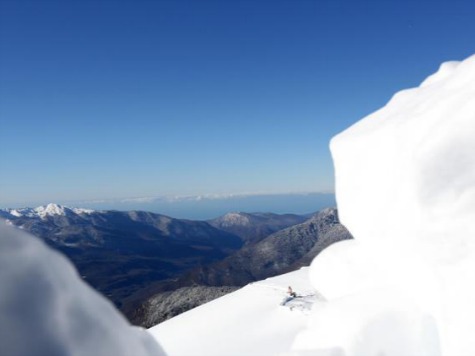Because Sochi is near to where the largest avalanche in history occurred, Olympic organizers plan to use explosives and even half-pipes to combat any potential avalanches during the Games that begin this weekend.
Planners will reportedly have “explosive charges that could be fired to cause small avalanches to fall before they develop into larger, more dangerous avalanches.” In addition, huge earthen dams as high as a three-story buildings have been designed to “to deflect avalanches away from ski runs and newly constructed Olympic buildings.” Half-pipes will also be used to guide a mini-avalanche down the mountain in an area described to have “perfect avalanche conditions.”
According to Yahoo, on Sept. 20, 2002, “a fast-moving avalanche of rock and ice killed 140 people, smashed dozens of homes and businesses, wiped out roads and obliterated other infrastructure on the northern face of the Caucasus Mountains near the Kolka Glacier.”
Researchers wrote that several aspects of that avalanche were “extraordinary, among them the extreme acceleration of the avalanche mass on a moderately inclined slope, the high flow velocity, the long travel distance and particularly the almost complete erosion of a valley-type glacier. The Kolka avalanche is, furthermore, the largest historically documented ice avalanche so far.”
There have been two significant avalanches since 2010 in Sochi and researchers have determined that the “area’s climate and its location near the Black Sea play a major role in avalanche occurrence”:
“The climate results from the interplay of cold air from the north with moist, warm air from the Black Sea,” the authors wrote. As a result, “the precipitation sums are huge,” and can be as much as 3.3 feet (1 m) of snow in a 24-hour period.
Additionally, the highest slopes surrounding Sochi are particularly steep. “In Ober Khutor or East Bowl [ski area], where many bowls overhang long, steep slopes, huge avalanches are possible,” the researchers wrote, “entraining large snow volumes able to reach the lower altitudes and especially the Rosa Lake plateau above the Olympic races finish zone.”
Finally, because of the relatively mild temperatures in much of the Sochi region, snowfall often rests on unfrozen ground. “This fact, in combination with the heavy snow climate, promotes snow gliding,” the researchers wrote, referring to the movement of large masses of snow. “It occurs on slopes steeper than 25 degrees, particularly when the ground is warm and the vegetation not very high or [conducive] to slippery interface.”

COMMENTS
Please let us know if you're having issues with commenting.